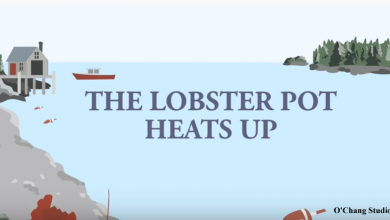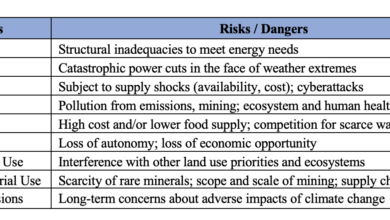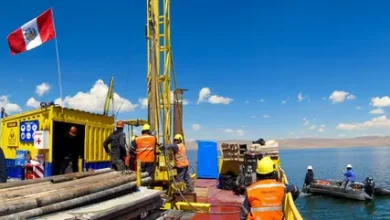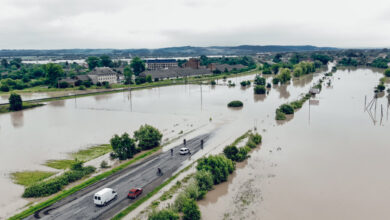DOE Appliance Minimum Efficiency Standards • Watts Up With That?

“It started with gas cooking. It will end with getting gas out of homes and business entirely, If they can. Basically, what we’re witnessing is the energy equivalent of ethnic cleansing. I’ve been saying this for years but now it should be obvious.”
The U.S. Department of Energy (DOE) under the Biden Administration has significantly accelerated the pace of minimum appliance efficiency rulemaking. With this acceleration, there has been a marked decrease in DOE’s analytical quality and transparency. The purpose of this update is to summarize:
- Energy Conservation Standards for Consumer Conventional Cooking Products
- Energy Conservation Standards for Consumer Products; Boilers
- Energy Conservation Standards for Consumer Water Heaters
Note: In DOE-speak, the term ‘consumer’ means non commercial/industrial, or just residential.
Part 1: Consumer Cooking Products
On April 27, 2023, MasterResource published DOE vs. Gas Cooking: A Review of Critical Comments. On August 2, 2023, DOE reopened the docket with a “Notification of data availability and request for comment (NODA) with comments due September 1. More than 100 comments were filed.
The NODA substantially changed the Supplemental notice of proposed rulemaking and announcement of public meeting & request for comments (SNOPR) that my April 27 article summarized . DOE probably should have (or at least could have) issued its NODA as a SNOPR and allowed more time to develop comments than the 30 days the NOPR allowed. A request for extension of the comment period was timely filed but denied by DOE on August 30. This request contained the following excerpt that summarized the effects of ignoring such requests:
“Ad hoc departures are not proper, for such activities disrupt orderly processes and harm predictability, which are the hallmarks of lawful administrative action.”
Footnote 5 of that statement further stated:
See, e.g., Reuters Ltd. v. FCC, 781 F.2d 946, 950-51 (D.C. Cir. 1986) (“[I]t is elementary that an agency must adhere to its own rules and regulations. Ad hoc departures from those rules, even to achieve laudable aims, cannot be sanctioned . . . for therein lie the seeds of destruction of the orderliness and predictability which are the hallmarks of lawful administrative action. Simply stated, rules are rules, and fidelity to the rules which have been properly promulgated, consistent with applicable statutory requirements, is required of those to whom Congress has entrusted the regulatory missions of modern life.”); Brock v. Cathedral Bluffs Shale Oil Co., 796 F.2d 533, 536 (D.C. Cir. 1986) (“It is axiomatic that an agency must adhere to its own regulations.”); Mine Reclamation Corp. v. FERC, 30 F.3d 1519, 1524 (D.C. Cir. 1994) (on its way to decision an agency must follow its own regulations). [emphasis added]
Some commenters viewed the NODA and relatively short (30-day) comment period as a violation to the Administrative Procedures Act codified by 5 U.S.C. § 551(5)–(7) and the DOE’s “process rule” codified by 10 CFR 430 Appendix A to Subpart C. One such commenter making this case was the Institute for Energy Research (IER).
Other comments with detailed content in opposition of DOE’s proposal for consumer cooking products included those of:
- Association of Home Appliance Manufacturers (AHAM)
- National Association of Home Builders (NAHB)
- Gas Analytics & Advocacy Services, LLC (GAAS)
- Joint Gas industry
The third reference in the above list are my comments. They addressed what has changed since DOE determined (in 2019) that additional efficiency mandates for gas cooking appliances is not justified. In short, Biden happened. With that change, DOE resorted to a longstanding bias that any amount of net positive cash flow (greater than zero) on average was sufficient economic justification. I cited AHAM’s press release “Gas Cooking Appliances Remain at Risk Despite New DOE Data” for this NODA that succinctly justified what that amount now is:
“The revised data reduces consumer savings to just 9 cents per month.”
I contend no one would freely elect to invest in anything with that kind of return-on-investment (ROI). Additionally, 9 cents per month is far less than the uncertainty range within DOE’s economic calculations. Besides, DOE’s economic calculations typically low-ball increased maintenance costs and over-inflate fuel costs (among many other biased input assumptions).
What else has changed is that DOE cost-effectiveness now includes highly controversial benefits from reduced climate change allowed by grossly inflated social cost of carbon (SCC) avoidance and health benefits from improved indoor air quality (IAQ). As shown by the following table, the economic add-ons of “climate” (SCC) and “health” (improved IAQ) benefits greatly exceed the reduced energy consumption values (shown as “consumer operating cost savings”) that the enabling legislation envisioned should be the leading criteria under the Energy Conservation and Policy Act (EPCA):
Further summarizing Table 1.2.2, for a 3% discount rate and the shown $259.2 million of DOE estimated net benefits, well over half ($160.8 million) are attributable to factors beyond the original intent of the 1975 Energy Policy and Conservation Act (EPCA) to provide “significant” consumer operating cost savings. [1] A similar ratio exists for a 7% discount rate. Of course, “significant” is defined by DOE. And, at least for the present, “significant” appears to mean any amount of net positive cash flow greater than zero.
My comments also cited a recent paper that debunked assumed IAQ benefits. The abstract of that paper follows:
- Reliability of Meta-Analysis Research Claims for Gas Stove Cooking−Childhood Respiratory Health Associations
Abstract:
Odds ratios or p-values from individual observational studies can be combined to examine a common cause−effect research question in meta-analysis. However, reliability of individual studies used in meta-analysis should not be taken for granted as claimed cause−effect associations may not reproduce. An evaluation was undertaken on meta-analysis of base papers examining gas stove cooking (including nitrogen dioxide, NO2) and childhood asthma and wheeze associations. Numbers of hypotheses tested in 14 of 27 base papers (52%) used in meta-analysis of asthma and wheeze were counted. Test statistics used in the meta-analysis (40 odds ratios with 95% confidence limits) were converted to p-values and presented in p-value plots. The median (interquartile range) of possible numbers of hypotheses tested in the 14 base papers was 15,360 (6,336−49,152). None of the 14 base papers made mention of correcting for multiple testing, nor was any explanation offered if no multiple testing procedure was used. Given large numbers of hypotheses available, statistics drawn from base papers and used for meta-analysis are likely biased. Even so, p-value plots for gas stove−current asthma and gas stove−current wheeze associations show randomness consistent with unproven gas stove harms. The meta-analysis fails to provide reliable evidence for public health policy making on gas stove harms to children in North America. NO2 is not established as a biologically plausible explanation of a causal link with childhood asthma. Biases – multiple testing and p-hacking – cannot be ruled out as explanation for a gas stove−current asthma association claim. Selective reporting is another bias in published literature of gas stove–childhood respiratory health studies.
Part 2: Consumer Boilers
On September 12, 2023, DOE held a public webinar to go over its proposal for increased minimum efficiencies for residential boilers. A 59-page slide deck for that meeting is here. (If you have never read one of these slide decks, I urge you to do so. It’s a relatively painless way of getting familiar with the ‘administrative state’ going about its business of picking winners and losers.)
The meeting went from 10 am to 3 pm (with a 1-hour lunch break). For the very first time (that I can recall), there were many participants representing manufacturing interests that would be adversely impacted by DOE’s proposal, and they were quite vocal about it (in a professional way of course).
Hopefully soon, DOE will publish a transcript of that meeting. That transcript will then become part of the record for this docket and can thus be used in litigation that appears likely at this point. And that is why the public meetings offer a relatively easy way to get “into the record.”
And why would manufacturers want to litigate? DOE would put some of them out of business. The reason is DOE would not just ban non-condensing hot water boilers, it would mandate the top end of condensing boiler efficiencies of 95% (“max-tech” in DOE-speak) as shown on page 56.
Part 3: Consumer Water Heaters
On September 13, 2023, DOE held a public webinar to go over its proposal for increased minimum efficiencies for residential water heaters that lasted 3 hours. A 74-page slide deck for that meeting is here. There were nearly twice as many participants on line compared to the number of webinar participants the day before for consumer boilers; and many of the participants represented water heater manufacturers, some of which would be devastated if DOE’s proposed mandates were finalized.
One manufacturer that stood out in this regard was Rinnai America. Rinnai is the sole manufacturer of non-condensing tankless water heaters in the U.S. Rinnai’s President stated, as I recall, that DOE’s proposed ban of non-condensing water heaters would shut down Rinnai’s new factory that cost $70 million. That, of course, would devastate the many involved.
Like the consumer cooking NODA, DOE consumer water heating NOPR is again calling for a very short comment period (ending on September 26, 2023). A request for extending the comment period has been submitted, but DOE has yet to acknowledge it.
Conclusions
DOE has been (ostensibly) ‘improving’ appliance efficiency for nearly a half-century. The low hanging fruit is long gone. In many cases, DOE is doing more harm than good and using unfair tactics to maintain control and reward its minions. What we have now is relentless self-serving “mission creep” of the administrative state and its “useful idiots” that forces consumers to fund the erosion of viable energy alternatives. The passage of the Inflation Reduction Act is greatly aiding and abetting this forced transformation away from free market forces.
“Industry” can elect to litigate whatever final rule DOE chooses to further regulate consumer appliance minimum efficiencies. That’s what we did for commercial boilers and we “won.” But doing so takes years and very deep pockets. Furthermore, even if “industry” prevails and gets a bad rule vacated, a new review is required every 6 years under EPCA. Another concern is when the clock restarts once a final rule is vacated. I don’t know. It could be argued that 6 years has passed already and DOE could possibly re-analyze the need for new commercial boiler standards immediately.
DOE doesn’t care what it costs to litigate. After all, DOE has the backing of the Department of Justice for such matters. In my opinion, DOE has strayed too far from any redeeming virtue that may have originally existed from the 1975 passage of EPCA. It’s past time for Congress clean up the mess it created by enacting EPCA and the numerous ambiguous loopholes that gives undeserved deference to the administrative state to interpret. A valid question is whether EPCA (and DOE for that matter) should be salvaged or scrapped.
Next Steps
We plan on making EPCA (reform or abolishment) a top priority. Defunding the IRA goes hand-in-hand with overhauling EPCA. DOE reform also requires DOE to obey its so-called “process rule.” I recommend that Congress order DOE to do so in conjunction with public workshops that fully include “we, the people” rather than preclude them (as did DOE’s misguided attempt at “peer review” with the National Academies. [For a full review of DOE’s process , please see my December 9, 2020, article, Energy Efficiency Policy Under Trump (Part II: EERE’s Process Rule & Overhaul). Also see the attachments to my comments for the gas cooking NOPR.]
Biden’s DOE wants to eliminate alternatives to electricity. This fixation became apparent to all with their planned elimination of gas cooking and ran head-on with consumers that hold gas cooking near-and-dear. Consumer preferences for gas cooking was and is a major obstacle to control via societal electrification overall.
This exact sentiment was a subject of discussion at the Electric Power Research Institute’s (EPRI) Electrification 2018 International Conference & Exposition that I attended. If you follow the link, note how EPRI coopted the National Association of Regulatory Utility Commissioners (NARUC) to endorse it. But I’ll have to leave this situation for another time (stay tuned).
As this article hopefully conveys, it started with gas cooking. It will end with getting gas out of homes and business entirely, If they can. Basically, what we’re witnessing is the energy equivalent of ethnic cleansing under the guise of fighting the “existential threat” of anthropogenic global warming. I’ve been saying this for years but now it should be obvious.
——————————
Mark Krebs, a mechanical engineer and energy policy consultant, has been involved with energy efficiency design and program evaluation for over thirty years. Mark has served as an expert witness in dozens of State energy efficiency proceedings, has been an advisor to DOE and has submitted scores of Federal energy-efficiency filings. His many MasterResource posts on natural gas vs. electricity and “Deep Decarbonization” federal policy can be found here.
Mark’s first article was in Public Utilities Fortnightly, titled “It’s a War Out There: A Gas Man Questions Electric Efficiency” (December 1996). Recently retired from Spire Inc., Krebs has formed an energy policy consultancy (Gas Analytic & Advocacy Services) with other veteran energy analysts.
[1] Note: EPCA was and is an energy and economic statute, NOT an environmental nor public health statute despite DOE’s decades of trying to make it so.
——————————




